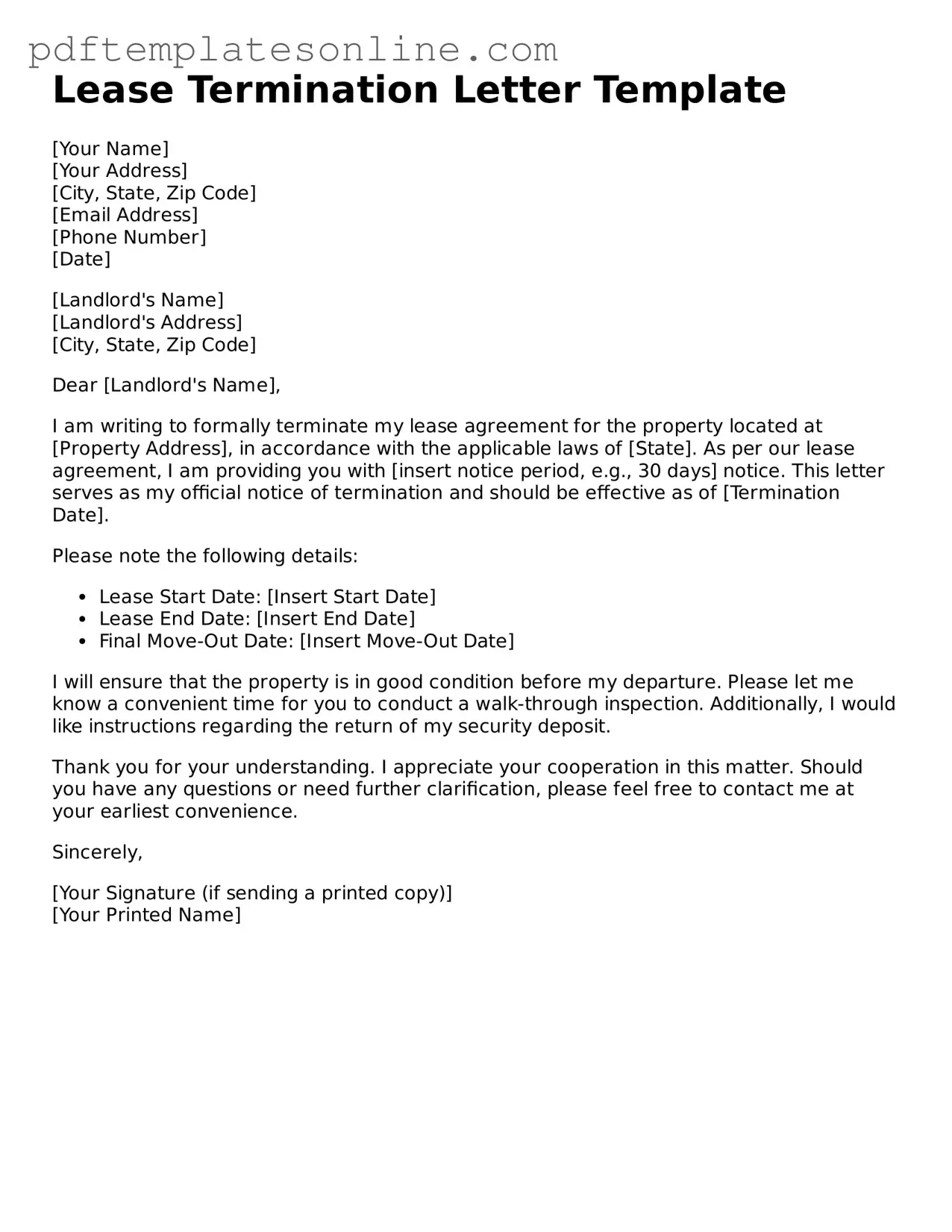When filling out a Lease Termination Letter form, many individuals overlook critical details that can lead to complications. One common mistake is failing to include the correct address of the rental property. This information is essential to ensure that all parties clearly understand which lease is being terminated.
Another frequent error is neglecting to specify the effective date of termination. Without this date, the landlord may not know when to expect the tenant to vacate the premises. This can result in misunderstandings and potential disputes over rent or security deposits.
Many people also forget to sign the letter. A signature is not merely a formality; it signifies that the tenant agrees to the terms outlined in the letter. An unsigned letter can be deemed invalid, leaving the tenant in a precarious situation.
Providing insufficient notice is another common pitfall. Most leases require a specific notice period, often 30 days. Failing to adhere to this timeline can lead to penalties or the tenant being held responsible for additional rent payments.
Some tenants mistakenly assume that verbal communication is enough. While a conversation with the landlord can be helpful, a written notice is necessary for legal purposes. A Lease Termination Letter serves as official documentation of the tenant's intent to terminate the lease.
Inaccurate personal information can also create issues. Tenants should ensure that their names, phone numbers, and email addresses are correct. Incorrect details can delay communication and lead to further complications.
Another mistake is not including a forwarding address. This information is crucial for landlords to return security deposits and send any necessary correspondence after the tenant has vacated the property.
Some individuals fail to keep a copy of the letter for their records. Having a copy can be invaluable if disputes arise later regarding the lease termination. It serves as proof of the tenant's intentions and actions.
Additionally, tenants often overlook the importance of reviewing their lease agreement before submitting the termination letter. Each lease may have specific clauses regarding termination that must be followed to avoid penalties.
Finally, many individuals rush through the process without proofreading the letter. Typos or unclear language can lead to misunderstandings. Taking the time to review the letter can prevent unnecessary confusion and ensure that the termination process goes smoothly.
